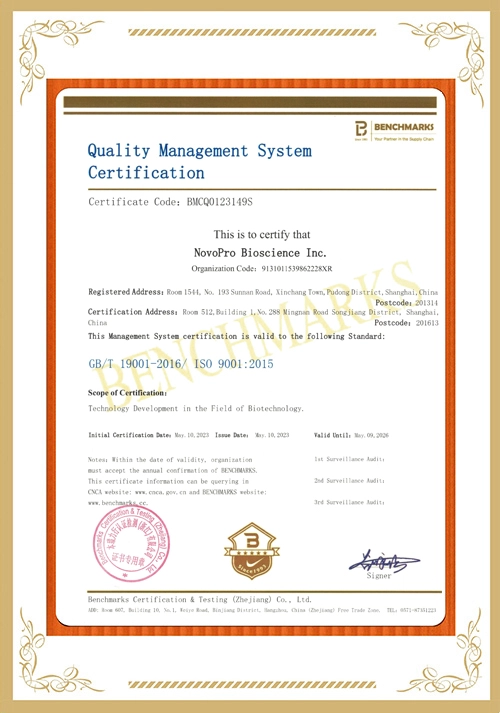-
Product Name
Anti-KEAP1 antibody
- Documents
-
Description
Rabbit Polyclonal to Human KEAP1
-
Tested applications
IHC-P, ICC/IF, IF
-
Species reactivity
Human KEAP1 / KEAP-1 / INRF2
-
Alternative names
KEAP-1 antibody; INrf2 antibody; INRF2 antibody; KEAP1 antibody; Keap1 antibody; KIAA0132 antibody; KLHL19 antibody; MGC10630 antibody; MGC1114 antibody; MGC20887 antibody; MGC4407 antibody; MGC9454 antibody; mKIAA0132 antibody
-
Isotype
Rabbit IgG
-
Preparation
Produced in rabbits immunized with a synthetic peptide corresponding to the N-terminus of the Human KEAP1 / KEAP-1 / INRF2, and purified by antigen affinity chromatography.
-
Clonality
Polyclonal
-
Formulation
0.2 μm filtered solution in PBS
-
Storage instructions
This antibody can be stored at 2℃-8℃ for one month without detectable loss of activity. Antibody products are stable for twelve months from date of receipt when stored at -20℃ to -80℃. Preservative-Free.
Sodium azide is recommended to avoid contamination (final concentration 0.05%-0.1%). It is toxic to cells and should be disposed of properly. Avoid repeated freeze-thaw cycles. -
Applications
IHC-P: 0.1-2 μg/mL
ICC/IF: 0.5-3 μg/mL
-
Background
Kelch-like ECH-associated protein 1, also known as cytosolic inhibitor of Nrf2, Kelch-like protein 19, KEAP1 and INRF2, is a cytoplasm and nucleus protein which contains one BACK (BTB/Kelch associated) domain, one BTB (POZ) domain and six Kelch repeats. KEAP1 / INRF2 is broadly expressed, with highest levels in skeletal muscle. KEAP1 / INRF2 is a key regulator of the NRF2 transcription factor, which transactivates the antioxidant response element (ARE) and upregulates numerous proteins involved in antioxidant defense. Under basal conditions, KEAP1 / INRF2 targets NRF2 for ubiquitination and proteolytic degradation and as such is responsible for the rapid turnover of NRF2. KEAP1 / INRF2 retains NFE2L2 / NRF2 in the cytosol. KEAP1 / INRF2 functions as substrate adapter protein for the E3 ubiquitin ligase complex formed by CUL3 and RBX1. It targets NFE2L2 / NRF2 for ubiquitination and degradation by the proteasome, thus resulting in the suppression of its transcriptional activity and the repression of antioxidant response element-mediated detoxifying enzyme gene expression. KEAP1 / INRF2 may also retain BPTF in the cytosol. It targets PGAM5 for ubiquitination and degradation by the proteasome.
Related Products / Services
Please note: All products are "FOR RESEARCH USE ONLY AND ARE NOT INTENDED FOR DIAGNOSTIC OR THERAPEUTIC USE"

